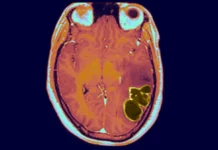Today, on the 14th of March, people all over the globe are observing Pi Day – an event dedicated to the bewildering and enigmatic mathematical constant known as π. Pi is a non-repeating, infinite number that denotes the ratio of a circle’s circumference to its diameter and approximates to 3.14159. To enhance your Pi Day festivities, we have collated 11 quirky and lesser-known facts about pi that may pique your interest.
The reason why Pi Day is celebrated on the 14th of March is due to the first three digits of pi – 3.14. In 2009, the United States House of Representatives officially declared the date as Pi Day.
Pi is classified as an irrational number since it cannot be expressed as a finite decimal or fraction, and its decimal representation goes on forever. This characteristic makes pi an infinite number, and a perplexing one, to say the least.
The symbol for pi (π) was initially used by William Jones, a Welsh mathematician, in 1706. Leonhard Euler, a Swiss mathematician in the 18th century, later popularized the symbol.
The Greek letter π denotes pi because it is the first letter of the Greek word ‘perimetros’ that means circumference.
In 2019, Emma Haruka Iwao, an employee at Google, calculated the value of pi to an astounding 31.4 trillion digits, which broke the previous record of 22.4 trillion digits set in 2016. The calculation took Iwao 121 days and 25 virtual machines to accomplish.
Pi has been studied for thousands of years, with ancient civilizations like the Babylonians and Egyptians approximating its value. Archimedes, a Greek mathematician, is recognized with the first precise approximation of pi, utilizing a method called the method of exhaustion in the 3rd century BCE.
Pi has real-world applications, from measuring the volume of spheres to calculating spacecraft trajectory. It is a vital tool in several fields such as physics, engineering, and statistics.
Pi is also utilized in music. Composer Michael Blake created a piece called “Pi Symphony” that incorporates the digits of pi into the music. Each digit corresponds to a musical note, creating a unique melody.
Pi has inspired art too. The artist Istvan Orosz created a series of optical illusions that spell out the digits of pi. These illusions use mirrors and other techniques to create the appearance of the numbers.
In some countries, pi is observed on July 22nd because the fraction 22/7 is a common approximation of pi. This approximation may not be as accurate as the decimal approximation of pi, but it is frequently used in calculations because it is easy to remember.
Pi also has its own holiday, Pi Approximation Day, which is observed on July 22nd. The day is dedicated to celebrating the 22/7 approximation of pi and its usefulness in mathematical calculations.
In conclusion, Pi Day is a day of enjoyment and learning that commemorates one of the most vital and intriguing mathematical constants worldwide. Whether you are a math aficionado or just seeking an excuse to devour some pie, there are countless ways to relish this unique day. Indulge in a slice of pie, calculate some digits of pi, or create your own pi-inspired artwork to celebrate this remarkable day.
However, Pi Day signifies much more than merely having fun and sharing intriguing facts. It reminds us of the crucial role of mathematics and science in our lives. Although pi may appear to be a theoretical concept, it has real-world applications in everything from engineering to finance. Without pi, we would not have many of the technological marvels that we take for granted today.
Additionally, Pi Day is an opportunity to contemplate the significance of education in our society. In particular, mathematics education is essential for fostering critical thinking skills and preparing students for a wide range of careers. By observing Pi Day and encouraging interest in mathematics and science, we can help inspire the next generation of mathematicians and scientists.
Regrettably, mathematics education does not always receive the attention it deserves. Many students struggle with mathematics and find it uninteresting or daunting. This is why events like Pi Day are so crucial. By making mathematics fun and approachable, we can help students develop a fondness for the subject and acquire the skills they need to succeed in life.
Fortunately, there are several organizations and initiatives dedicated to promoting mathematics education and inspiring students. For example, the National Council of Teachers of Mathematics (NCTM) provides resources and support for math teachers at all levels, while the Math Circles Network offers free math programs for students of all ages.
In conclusion, Pi Day is not just an occasion to commemorate an intriguing mathematical concept; it is a call to action to support math and science education for all. Whether you are a mathematics enthusiast or not, take a moment today to appreciate the wonder of pi and the significance of education in our world. Happy Pi Day!








